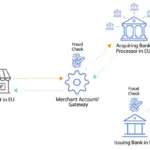In the past decade, the global financial landscape has undergone a remarkable transformation. From Bitcoin to stablecoins, digital currencies have challenged the traditional role of money. Now, central banks around the world are stepping into the arena with their own answer to the crypto revolution — Central Bank Digital Currencies (CBDCs).
But what exactly are CBDCs, and why are they gaining so much attention?
What Are CBDCs?
A Central Bank Digital Currency (CBDC) is a digital form of a nation’s official currency — issued, regulated, and backed by the central bank. Unlike cryptocurrencies such as Bitcoin, which operate on decentralized networks, CBDCs are centralized and fully controlled by governments.
They combine the efficiency of digital payments with the stability of fiat money. Essentially, it’s like holding physical cash — but in a secure, programmable digital form.
Why Are Governments Exploring CBDCs?
The rise of CBDCs is driven by several key motivations:
- Modernizing Payment Systems
Many countries are moving toward cashless societies. CBDCs promise faster, cheaper, and more secure transactions, both domestically and across borders. - Enhancing Financial Inclusion
CBDCs can help people without bank accounts — especially in developing countries — access digital money directly through mobile devices. - Countering Private Cryptocurrencies
Governments see CBDCs as a way to retain control over monetary policy in a world where decentralized cryptocurrencies and stablecoins are growing rapidly. - Improving Transparency and Security
CBDCs allow central banks to monitor transactions more effectively, helping to combat money laundering, fraud, and tax evasion.
Global Progress: Who’s Leading the Way?
Several countries are already testing or launching their CBDCs:
- China is leading the charge with the Digital Yuan (e-CNY), already in pilot use across multiple cities.
- The European Central Bank is developing the Digital Euro, aiming for a balance between privacy and regulation.
- The Bahamas launched the Sand Dollar, the world’s first fully operational CBDC.
- Other nations — including India, Nigeria, and Brazil — are also advancing their digital currency projects.
Meanwhile, the United States is still in the research phase, carefully evaluating the potential impact on its banking system and privacy concerns.
Challenges and Concerns
While CBDCs offer clear advantages, they also raise important questions:
- Privacy vs. Control: Governments could potentially track every transaction, sparking concerns about financial surveillance.
- Cybersecurity Risks: As digital infrastructure grows, so does the risk of hacking or technical failures.
- Impact on Commercial Banks: If citizens can hold funds directly with a central bank, traditional banks might lose deposits — reshaping the financial ecosystem entirely.
Finding the right balance between innovation, security, and personal freedom will be the ultimate challenge.
The Road Ahead
The rise of CBDCs marks a historic turning point. They could redefine how money moves around the world — making payments faster, more inclusive, and more efficient.
However, their success will depend on how governments design and implement these digital systems. A well-structured CBDC could boost trust in the financial system; a poorly designed one could undermine it.
As central banks continue experimenting and learning, one thing is clear:
The future of money is digital — and CBDCs are leading the way.















